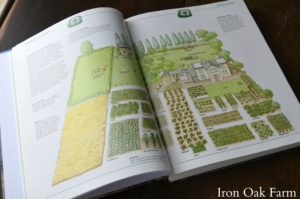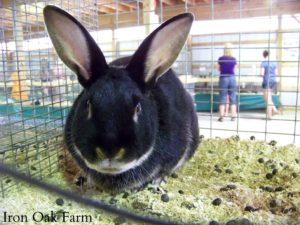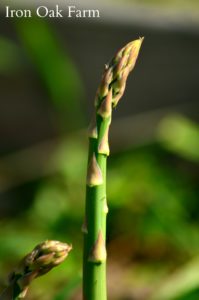Lots of Little Incomes;
8 Tips to Help You Do a Lot with a Little.
Sometimes on a homestead it can be difficult to find one source of income that will sustain you for the whole year. Unless you have a large piece of property and can devote acres and acres to a mono crop or a single function livestock, you might have to gather income from many different ventures.
This might mean dividing your property up into profit areas. Usually, this is done seasonally. Meaning you designate smaller sections of your land to different means of income and harvest each section when it comes into season.

 One of my favorite books that addresses this concept in detail is The Self Sufficient Life and How to Live It by John Seymour. This book shows how to break up any size land from an Urban patio to a 5 acre farm with full color illustrations. The discovery of this book in my teenage years is a big factor in finding the possibilities that even a small piece of land can hold and fueled my desire to one day own a farm.
One of my favorite books that addresses this concept in detail is The Self Sufficient Life and How to Live It by John Seymour. This book shows how to break up any size land from an Urban patio to a 5 acre farm with full color illustrations. The discovery of this book in my teenage years is a big factor in finding the possibilities that even a small piece of land can hold and fueled my desire to one day own a farm.
Tips
Cultivate what you can manage– Start small and work your way larger. There’s nothing more defeating than becoming overwhelmed and not being able to get a crop in, or take proper care of a project. Smaller projects done well are better than larger projects done poorly. Take into consideration how many people you have working on a particular project and what is your equipment budget. If it’s only you and your spouse for example, you might not be able to weed and water huge spaces of crops.
 Know your physical limitations– Keeping a farm is hard work. It’s satisfying, but it can take a toll on your body. It might sound ideal for example, to grow a field of pumpkins or watermelon, but melons and squash are a heavy crop to harvest. It doesn’t mean you have to abandon difficult projects, but a dose of creativity and being realistic will go a long way. Consider a U-Pick type sale method where customers go out into the field and bring in their harvest. Or consider hiring seasonal workers to help during the busy times.
Know your physical limitations– Keeping a farm is hard work. It’s satisfying, but it can take a toll on your body. It might sound ideal for example, to grow a field of pumpkins or watermelon, but melons and squash are a heavy crop to harvest. It doesn’t mean you have to abandon difficult projects, but a dose of creativity and being realistic will go a long way. Consider a U-Pick type sale method where customers go out into the field and bring in their harvest. Or consider hiring seasonal workers to help during the busy times.
Focus on what sells– After a few seasons you may realize that some of these smaller projects aren’t panning out. Don’t be afraid to abandon an idea and move in a different direction. This is how you find the niche for your homestead. Focus on what works for you and your farm.
Utilize your land– Do you have a grove of sugar maples, tap them for syrup. Do you have a natural pond? Consider raising fresh water shrimp. Live in the woods? Firewood sales might be an option. Often it’s better to work with mother nature than try to compete with her.
 Invest in space saving projects– Bees take up very little space, Quail and rabbits breed quickly, take up little room and turn a profit fast. Research horizontal growing methods for otherwise spacious crops. Consider raising miniature version of livestock; Nigerian Dwarf goats, bantam chickens or Zebu cows.
Invest in space saving projects– Bees take up very little space, Quail and rabbits breed quickly, take up little room and turn a profit fast. Research horizontal growing methods for otherwise spacious crops. Consider raising miniature version of livestock; Nigerian Dwarf goats, bantam chickens or Zebu cows.
Find a niche– Many successful homesteads have found a niche item that is in demand and they are able to produce a product that supplies that demand. This is different for each homestead and can be the most frustrating and time consuming puzzle to solve. Go to your farmers market and try to find the missing item. What do you wish you could purchase but can’t find. They tell writers to tell the story that you want to hear. Well for homesteaders, grow the product that you want to buy.
Pay attention to questions that people ask about your farm– One item that we get asked about a lot at our farm is if we grow okra. It’s hard to impossible to find okra in northern grocery stores. It’s not a hugely popular item, yet there is a demand for it. There is a sweet spot between providing a rare item and finding enough people who desire that item.
 Consider growing perennials– Perennial flowers or vegetables like asparagus can turn a nice seasonal profit and they only have to be planted once.
Consider growing perennials– Perennial flowers or vegetables like asparagus can turn a nice seasonal profit and they only have to be planted once.
Invest in future projects– Each year my husband and I plant a few more fruit trees. It’s not something we get immediate gain from, but in about 10 years we will have a nice little orchard. Another example is in equipment usage. If you borrow/rent a tractor implement for a current project, utilize that equipment while you have it on your property to prepare land, dig holes or remove stumps for future projects.










